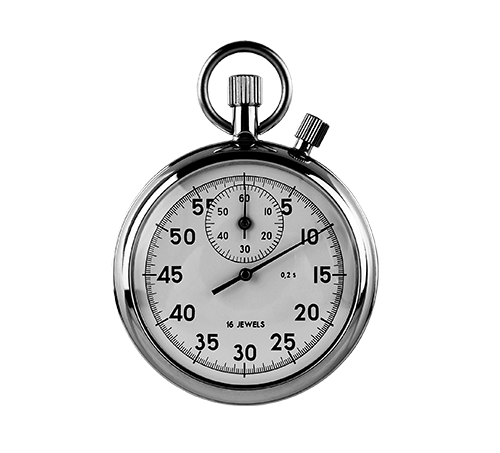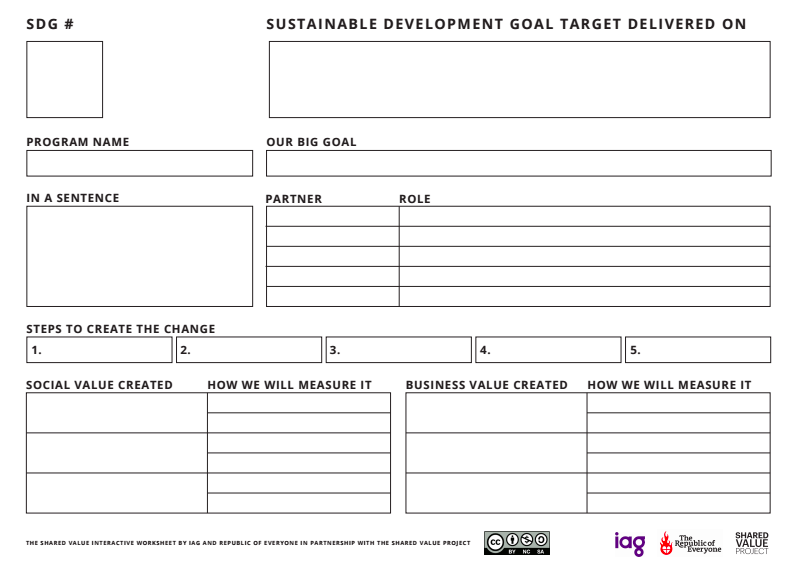This article originally appeared in the Fifth Estate.
Co-authored with Ramana James, Head of Group Shared Value, IAG.

Heart disease, obesity, key worker housing, transport, aged care, loneliness, extreme weather and disaster recovery. These are big issues. So could it be possible that with the right people in the room, you could design a solution that could help solve one of them, in just one hour?
Better still, could it be a profitable business solution?
We put it to the test at this year’s Shared Value Forum and the results were eye-opening. But before we tell you how we did it, a little background.
In case you haven’t heard, the concept of shared value in business is growing rapidly, both locally and globally.
First born in the Porter & Kramer’s Harvard Business Review article of 2011, shared value says, in a nutshell, that where there are problems there are business opportunities, and that social problems are no different.
This month heralded Australia’s fourth Shared Value Forum and it was a coming of age.
With NAB hosting, and Lion, AIA Australia and IAG presenting, it was always going to have a solid business focus. However, the number of CEOs, GMs and ELT members presenting and watchfully learning from Mark Kramer turned a conversation that might once have been seen the realm of CSR departments, into C-Suite business strategy.
Mark’s message is simple: profit is what makes ideas scalable and sustainable. So if you can create profitable solutions to social problems, the value is shared and everyone benefits.
His ability to clearly differentiate philanthropy and CSR from shared value profit-making business opportunity is masterful. And his ability to bring together related concepts into a cohesive story is second to none.
This year he outlined the relationship between shared value and collective impact (of which he is co-author, too).
In simple terms, shared value solves social problems to create value for both business and the community it operates in.
Collective impact, on the other hand, accepts that most societal problems are too big for any one player to solve, so creates a framework for organisations to work collectively to solve an issue for mutual benefit.
You can see how, together, these two disciplines have the power to bring together industry, government and community to work together to effect positive, profitable change.
One such example is Australia’s own NAB, who responded to the financial crisis by instituting a new bank-wide strategy in 2009 seeking competitive advantage by offering a fairer proposition to its customers. Alongside several other initiatives, the bank also created NAB Assist, a business unit to provide financial hardship assistance for struggling customers. In 2015 alone, NAB Assist supported 20,174 customers, with seven out of 10 customers back on track or working to be back on track six months later, a better outcome than writing the debt off and saving NAB $60 million.
So, back to the challenge. Using shared value – and a little bit of collective impact thrown in – can you and your team design a program with the potential to generate profit and social change?
We think you can, and this worksheet will help (click to download).
Here’s how it works:
Step 1 is to choose a goal. The best way to do this is think big and begin with one of the UN’s recently released Sustainable Development Goals. Select a goal then, within each goal is a series of targets. Choose a target. This is the problem you will help solve.
Step 2 is to create a theory of change. Start by making a mission. Your mission should be time bound and audacious. Next, define your project in a sentence – this is your elevator pitch. Finally, lay out five or so steps you will take to get there.
Step 3 is partnerships. No one ever changed the world on their own. As Mark Kramer says, government gives you reach, business gives you profit and NGOs give you social impact. So start with a cross sector collaboration, then look at other companies and organisations who might join you in the cause.
Step 4 is outcomes and measurement. Your project is only sustainable and scalable if it generates profit. And it’s only good for the world if it creates positive social outcomes. So choose what you will measure, and how you will measure it.
Step 5 is tell us about it. Some of the greatest ideas in the world started with rapid design – whether in a workshop or a cafe. If you and your team creates something you think has legs, email it to hello@sharedvalue.org.au. We just might be able to help you get it off the ground.
Ramana James is head of group shared value at IAG. Ben Peacock is founder of sustainability strategy and communications agency Republic of Everyone. IAG and Republic of Everyone are members of the Shared Value Project.
Here at Republic of Everyone we bring brands, sustainability and creativity together to make doing good, good for business.
Call us +61 2 8097 8746, email ben@republicofeveryone.com or drop us a line below if you would like to work with us.

